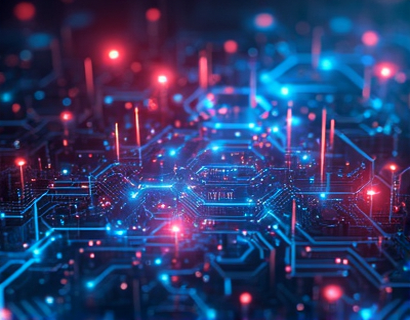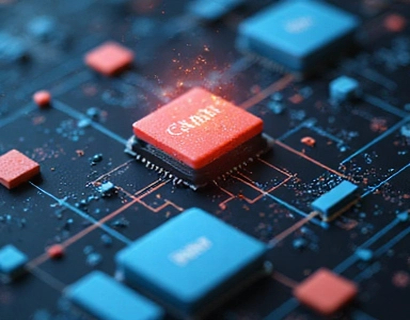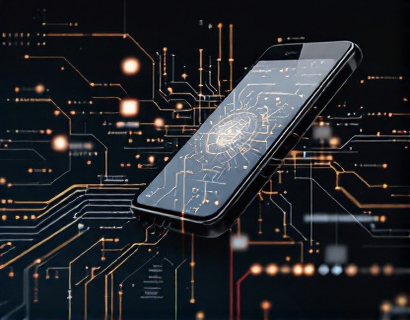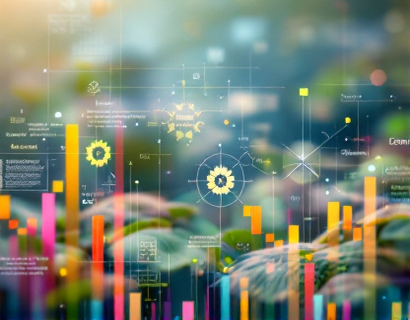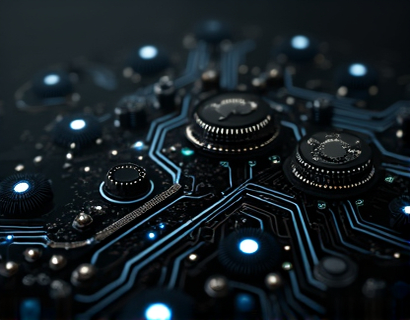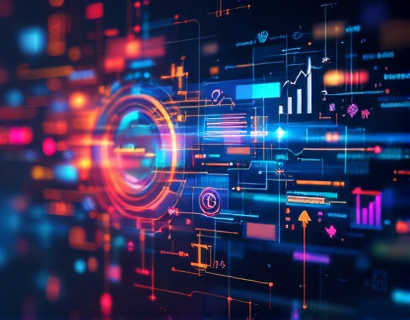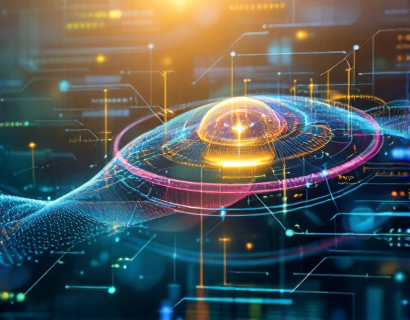Revolutionizing User Experiences: The Synergy of Crypto and AI in Next-Gen Digital Transformation
The intersection of cryptocurrency and artificial intelligence (AI) is paving the way for a new era of digital transformation. This convergence is not just about combining two advanced technologies but about creating a synergy that enhances user experiences, secures transactions, and opens up unprecedented opportunities for innovation. As we delve into this topic, it's essential to understand how these technologies are individually impacting the digital landscape and how their integration is redefining user interactions.
Understanding Cryptocurrency and AI
Cryptocurrency, since its inception with Bitcoin in 2009, has revolutionized the way we think about money and transactions. It introduced a decentralized, peer-to-peer system that operates on blockchain technology, ensuring transparency, security, and immutability. Beyond digital currencies, the blockchain ecosystem has given rise to smart contracts, decentralized finance (DeFi), and non-fungible tokens (NFTs), each adding layers of complexity and utility.
Artificial intelligence, on the other hand, involves the simulation of human intelligence processes by machines, particularly computer systems. These processes include learning (the acquisition of information and rules for using it), reasoning (using rules to reach approximate or definite conclusions), and self-correction. AI's applications span from natural language processing and computer vision to predictive analytics and autonomous systems.
The Convergence of Crypto and AI
The combination of cryptocurrency and AI is creating a powerful toolkit for developers and businesses. AI algorithms can analyze vast amounts of blockchain data to identify patterns, predict market trends, and optimize trading strategies. Conversely, the transparency and security of blockchain can enhance AI systems by providing a trustworthy and tamper-proof environment for data storage and exchange.
One of the most significant applications of this convergence is in the realm of decentralized applications (dApps). dApps leverage AI to provide intelligent, user-friendly interfaces while benefiting from the security and decentralization of blockchain. This synergy ensures that user data is protected and that transactions are transparent and verifiable.
Enhancing User Interactions with AI-Driven Interfaces
AI is transforming user interfaces (UIs) and user experiences (UX) by making them more intuitive and personalized. In the context of crypto and blockchain, AI can analyze user behavior and preferences to tailor the interface to individual needs. For instance, a crypto trading platform can use AI to recommend assets based on a user's trading history and risk tolerance, thereby enhancing the overall user experience.
Chatbots powered by natural language processing (NLP) are another example of AI enhancing user interactions. These chatbots can provide real-time support, answer queries, and guide users through complex processes such as setting up a wallet or executing a smart contract. The integration of voice recognition further personalizes the experience, making it more accessible and user-friendly.
Security and Trust through AI and Blockchain
Security is a paramount concern in the crypto space, and AI plays a crucial role in bolstering it. Machine learning algorithms can detect anomalies and potential fraud in real-time, providing a proactive defense against cyber threats. For example, AI can monitor transaction patterns and flag suspicious activities, ensuring that the system remains secure and trustworthy.
Blockchain's inherent security features, combined with AI, create a robust framework for verifying identities and transactions. Self-sovereign identity solutions, powered by blockchain and AI, allow users to control their personal data and authenticate themselves without relying on centralized authorities. This not only enhances security but also empowers users by giving them more control over their digital identities.
Optimizing Operations with AI in Crypto Ecosystems
Beyond user interactions, AI is optimizing the backend operations of crypto ecosystems. Smart contracts, while powerful, can be complex and prone to errors. AI can assist in writing, testing, and deploying smart contracts by identifying potential vulnerabilities and suggesting improvements. This reduces the risk of bugs and enhances the reliability of decentralized applications.
Another area where AI shines is in market analysis and trading. AI algorithms can process vast amounts of data from various sources, including social media, news feeds, and market indicators, to make informed trading decisions. This data-driven approach can lead to more accurate predictions and better investment strategies, benefiting both individual traders and institutional investors.
Innovative Use Cases: AI and Crypto in Action
One innovative use case is the development of AI-driven crypto assistants. These assistants use machine learning to analyze market data, provide real-time insights, and offer personalized investment advice. They can also automate trading based on predefined strategies, allowing users to focus on higher-level decision-making.
Another exciting application is in the field of digital art and collectibles. AI-generated art, combined with NFTs, is creating new avenues for artists and collectors. AI can generate unique digital artworks, which are then tokenized on the blockchain, ensuring ownership and scarcity. This fusion of creativity and technology is opening up new markets and opportunities for artists.
Challenges and Considerations
While the potential of AI and crypto convergence is vast, there are challenges that need to be addressed. Regulatory uncertainty remains a significant hurdle, as governments worldwide are still grappling with how to regulate these emerging technologies. Ensuring compliance while fostering innovation is a delicate balance that requires collaboration between technologists, policymakers, and industry stakeholders.
Another consideration is the environmental impact of both AI and blockchain technologies. AI requires significant computational power, which can lead to high energy consumption. Similarly, the proof-of-work consensus mechanism used by many blockchains is energy-intensive. Exploring more sustainable alternatives, such as proof-of-stake or energy-efficient AI algorithms, is crucial for the long-term viability of these technologies.
The Future of Digital Transformation
The future of digital transformation is intrinsically linked to the continued evolution of AI and cryptocurrency. As these technologies mature, we can expect to see more seamless integrations that enhance user experiences, secure transactions, and drive innovation. The next generation of digital solutions will likely leverage quantum computing, edge AI, and advanced blockchain protocols to create even more powerful and efficient systems.
For tech enthusiasts and early adopters, the convergence of AI and crypto represents a frontier of endless possibilities. By staying informed and embracing these technologies, individuals and businesses can position themselves at the forefront of the next digital revolution. The journey ahead is exciting, and the potential for transformative change is immense.





